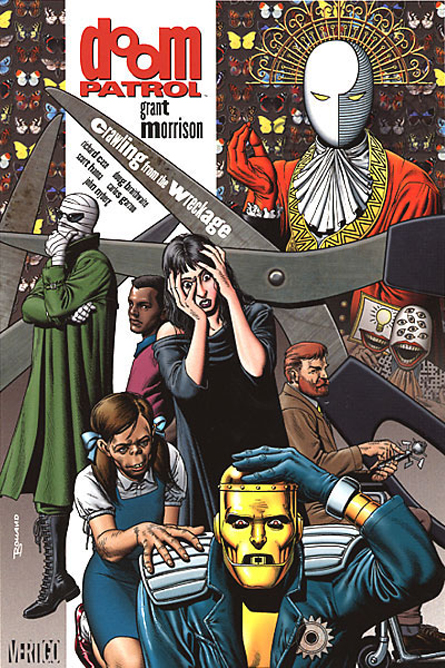What would happen if Batman went bad? A wag might answer that question by mentioning the 1997 cinematic abortion that is Batman & Robin. Mark Millar, on the other hand, famously has his own answer to the rather trite question. It’s a series called Nemesis.
On the surface this is another entry into Millarworld
that very clearly has Hollywood in mind. The five issues contain a multitude of
set pieces, all designed to look cooler than the last. They advance the plot
only in as much as they continually up the stakes for the story’s hero Blake
Morrow, giving him bigger obstacles to overcome.
But then that’s basically all the plot consists of. It’s
a continual escalation from one ludicrous to the next, each designed to show
how dangerous Nemesis is. Pages after Nemesis has captured the President of the
United States he’s stealing a kidney from a hospital (for no clear reason
beyond it’ll cause a child to die) and making his getaway in an lavish chase
sequence involving a sports car, a motorbike, a helicopter, hundreds of cops, a
missile launcher and what appears to be a lightsaber.
It’s not a subtle comic. But then it doesn’t pretend to
be. Mark Millar is known for writing fairly action-heavy stories. To complain
that this is more of the same misses that entirely. Millar doesn’t claim or try
to write anything that explains or explores the human psyche or provides a wry
sideways glance at the failings of the world’s governments. He writes things
about super powered people fighting.
This makes Nemesis sound a shallow book. It’s not. Its
two central characters, Blake Morrow and the titular Nemesis, are both very
nicely fleshed out. They are stock characters illustrated with broad strokes
familiar to anyone who’s ever read a comic or watched a film put out by Marvel
or DC, yes, but those strokes are made very well. Within the first few pages we
know the basics of Morrow’s character, allowing Millar to flesh out his
backstory, and the backstory of his family, across the remaining four issues.
Nemesis is a different kettle of fish. His true identity
is hinted at throughout the book, and there are several points where it appears
that the author has confirmed who he really is. But even when the final page is
turned we discover that actually we don’t know who’s under that perfect white
mask at all. In this regard he’s more like the Joker than Batman: a nameless,
faceless psychopath with a blank space where there should be a history.
In all other regards Millar has remained faithful to his
original goal of exploring what a bad Batman would be like. Nemesis has access
to what appears to be a bottomless pit of money, granting him all the fancy
toys of ‘The Caped Crusader’. He’s just missing the morals. The two characters
are both at unrealistically high levels of physical conditioning. Nemesis can
perform a back flip off a motorbike as it hangs in mid-air, aiming a missile
launcher at a nearby helicopter before he hits the ground. He can best 97 guards
swaddled in riot gear single-handed and without a weapon. He can run around
atop a plane without a care in the world.
“Macho” barely covers it.
As you’d expect from one of Millar’s creator owned
affairs this is a comic that doesn’t shy away from being adult. Four letter
words fly around the first issue like they’re going out of style. Thankfully
this settles down as Millar finds his feet and the story gets underway. What
doesn’t settle down is the visceral approach taken to the title’s fight
sequences. The treatment of the human head alone is astonishing: throughout the
book we see heads knocked off, blown to pieces, and get metal bars shoved
through them. The prison scene in the third issue is particularly gruesome.
Steve McNiven’s art is well suited to the blood and gore
approach. While he delivers that well his real strength is doing justice to the
writer’s elaborate set pieces. That’s important considering they’re what keeps
the comic moving. He proves competent at the title’s quieter moments too,
giving you reason to care about the otherwise meaningless supporting cast,
particularly Morrow’s (amazingly dysfunctional) family.
This is not a comic that will change your outlook on
anything, not even Batman, the character that provided the inspiration. What it
will do is allow you to while away half an hour and feel like you’ve not wasted
time afterwards. That’s what we should be able to expect from a good comic.
Bring on Nemesis Returns.


